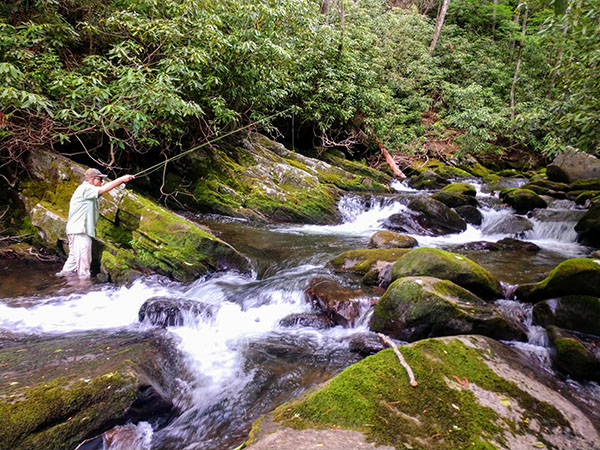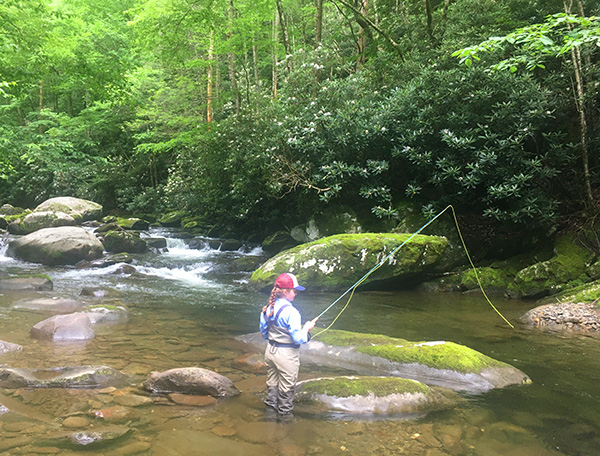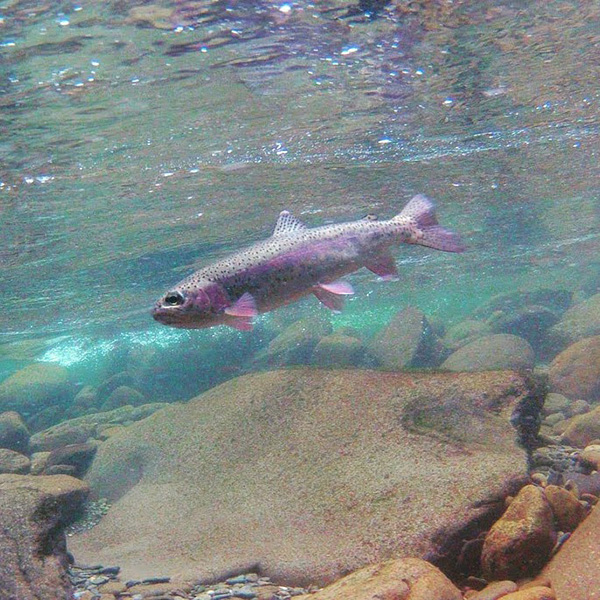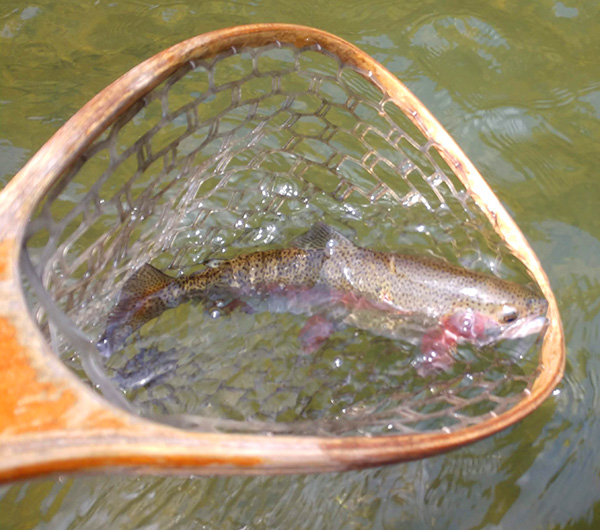We’ve had an exceptionally busy summer guide season this year. After the park re-opened in May visitation has been very high and our guide calendar has been booked solid.
Flows got a little skinny as July progressed but it seems we have moved passed that. The mountains have seen daily thunderstorms for a couple of weeks now and that weather pattern shows no sign of breaking. As a result we have good flows and great water temperatures across the park.
Water levels are generally higher on the Carolina side of the Smokies right now. Most of the thunderstorm activity boils up on the Tennessee side of the park and drifts into North Carolina. As a result, most of the rain has fallen in North Carolina, but every storm is a roll of the dice and there have been some heavy rains in Tennessee as well.
The usual summer dry flies are producing right now. A Parachute Adams #14-16 is never wrong along with #16 Stimulators and Elk Caddis. Ants patterns are always a good choice on sunny days but don’t seem as effective on overcast or rainy days. Our typical guide rig is a #16 Stimulator with a #16-18 Zelon Nymph or Pheasant Tail Nymph dropper.
Small streamers are always good to have handy if the stream muddies up after a heavy rain. This is especially true in streams with brown trout. Rising, dirty water is an ideal time to catch larger brown trout in the Smokies. This isn’t something you can plan ahead for. You just need to be prepared for it if the situation arises.
Every summer about this time we tend to hear the same questions. Many people ask if they should even bother to fish based on reports from other areas being too warm for trout. It’s important to remember the Great Smoky Mountains are the highest range east of the Mississippi River. Night time temperatures along the crest is usually in the 50’s if not the 40’s. It’s very rare for our water temperatures to exceed 65 where we fish. There are streams that will approach or exceed 70 in the heat of summer, but these aren’t usually the best spots for trout and certainly not where we fish.
Many anglers are often better acquainted with “delayed harvest” streams in the Southeast that are stocked in the fall, winter, and spring but too warm for trout in the summer. This is not the case inside the national park where all the trout are wild and self sustaining. If water temperatures were in the 70’s for a couple of months each summer this probably wouldn’t be a wild trout fishery. Some streams in the Smokies, usually in the lower elevations along the park border, don’t fish as well in the heat of summer and we steer clear. However, there is plenty of good water in the summer. We can usually reach cool water without too much effort.
Tailwaters
The local tailwater situation has improved since the spring, but it’s still relatively tough for wading anglers. Anyone who is wading will need to get out early to stay ahead of rising water from generation.
Something to keep in mind for the Clinch… It looks like one of the generators is out with only one operating. That means that there is only one generator so low water will likely become a rare commodity as time goes on. TVA generally doesn’t like to pass water through the dam without power generation. With only one generator that means they may run one generator twice as long since there is no second turbine. This could lead to excellent float fishing as the season progresses. Right now there has been a good window in the mornings with zero generation and that translates to late afternoon in the lower reaches of the river at Clinton.
We’ve stayed so busy in the Smokies we’ve barely had any time for ourselves this season. As a result we’ve only floated a very little bit, but fish quality has been outstanding on the large rivers.



